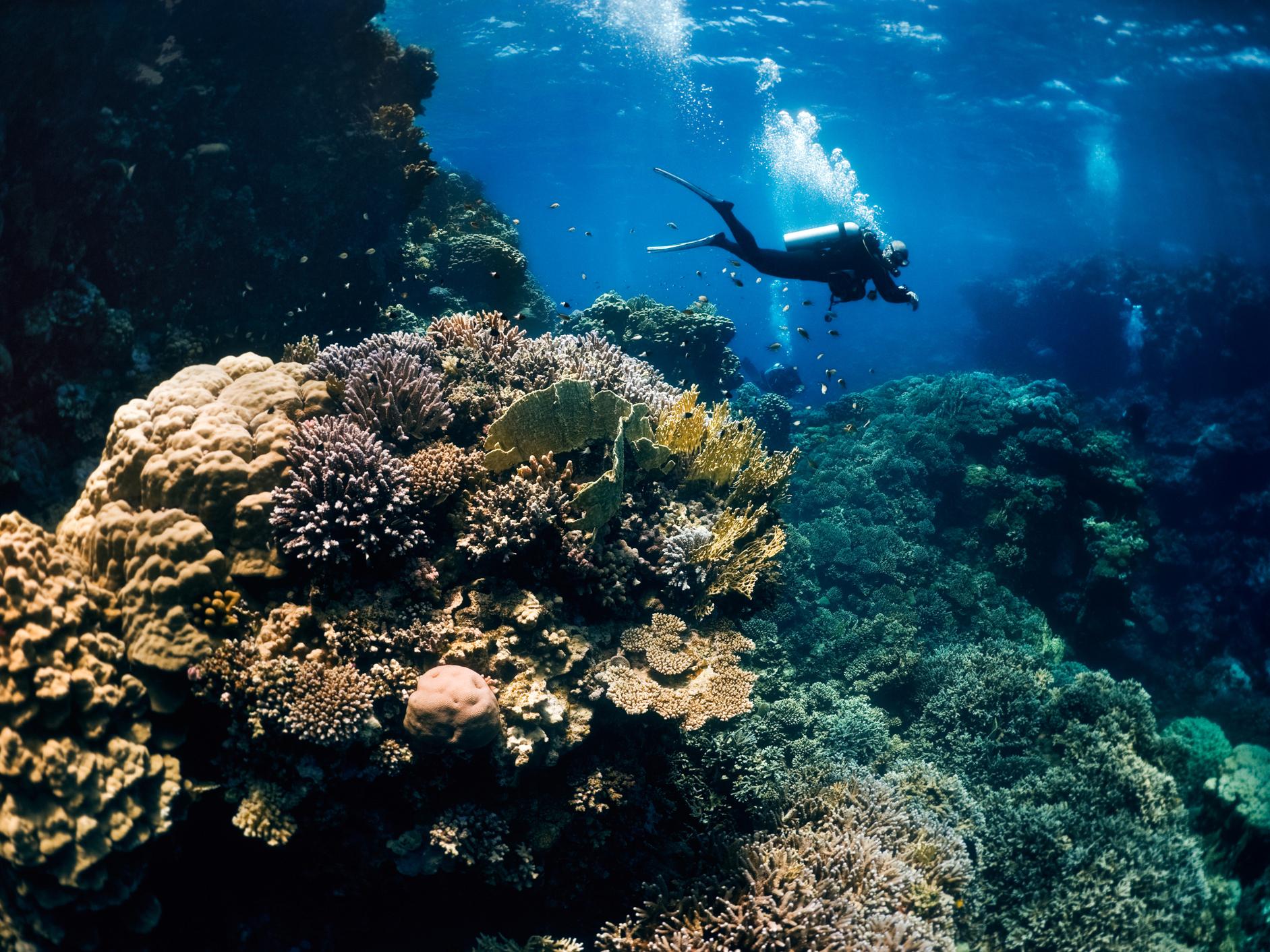Coral oases that resist climate change offer ‘glimmer of hope’ for dying reefs
Understanding how some pockets of reef avoid destruction may help save others, but scientists warn there is no room for complacency

Your support helps us to tell the story
From reproductive rights to climate change to Big Tech, The Independent is on the ground when the story is developing. Whether it's investigating the financials of Elon Musk's pro-Trump PAC or producing our latest documentary, 'The A Word', which shines a light on the American women fighting for reproductive rights, we know how important it is to parse out the facts from the messaging.
At such a critical moment in US history, we need reporters on the ground. Your donation allows us to keep sending journalists to speak to both sides of the story.
The Independent is trusted by Americans across the entire political spectrum. And unlike many other quality news outlets, we choose not to lock Americans out of our reporting and analysis with paywalls. We believe quality journalism should be available to everyone, paid for by those who can afford it.
Your support makes all the difference.Sections of coral in the Pacific and the Caribbean are fighting back against the global threats that have decimated reefs worldwide.
While the discovery does not allow any room for complacency in the fight to save the world’s reefs from extinction, scientists are tentatively optimistic about what they can learn from these pockets of resistance.
Climate change, hurricanes and human activities such as intensive fishing have destroyed vast swathes of the planet’s reefs, but in a new study scientists found this destruction was not uniform.
Some coral “oases” are either avoiding these effects altogether, resisting them or bouncing back following changes that saw off nearby reefs.
“There are a number of reasons why one coral reef might survive while its neighbour dies,” said Dr James Guest, a coral reef researcher at Newcastle University who led the study.
“It could be that the location is simply better for survival – deeper water that is outside the storm tracks, for example.”
Coral reefs might also possess certain biological characteristics that make them able to resist damage, or characteristics of their environment may allow them to rebuild themselves effectively following damage.
“Identifying cases in which individuals or communities perform better than their neighbours, despite being at equal risk, is common in public health and medical fields and using a similar approach in ecology can help us to identify areas that can be prioritised for conservation,” said Dr Guest.
These findings were laid out in a study published in the Journal of Applied Ecology that explored dozens of these cases from tropical regions around the world.
As an example, the study’s lead author, Professor Peter Edmunds from California State University, Northridge, described being “blown away” by the ability of reefs off the French Polynesian island of Moorea to recover from destruction.
Soon after Professor Edmunds and his team began working on the island in 2005, the local reefs were overrun by hordes of crown-of-thorns starfish.
These many-armed creatures have played a major role in the decline of the Great Barrier Reef in recent years.
“By 2010, there was as close to zero coral on the outer reefs as I have seen in my entire career. And yet, within eight years, that coral has regrown,” said Professor Edmunds in reference to his Moorea study site.
“In places, about 80 per cent of the sea floor is now covered by live coral. It is a remarkable example of an oasis.”
Professor Edmunds emphasised that case studies like this do not contradict the reports of mass bleaching events and predictions that coral reefs are facings an existential threat unless action is taken to avert climate change.
“However, there are kernels of hope in places where corals are doing better, or where they are doing less badly than elsewhere and these places provide us with a focus of attention that might be used to enhance coral conservation efforts,” he noted.
Scientists have voiced the need for “radical interventions” such as genetic modification of corals and geoengineering of the atmosphere in an effort to cool the reefs.
Massive bleaching events caused by heatwaves led to “catastrophic die-offs” in the Great Barrier Reef in 2016 from which Australian researchers have concluded the natural wonder is unlikely to recover.
“This glimmer of hope does not mean we can be complacent about the severity of the crisis facing most of the world’s coral reefs,” said Dr Guest.
“But it does give us a starting point from which to understand why some ecosystems might be more resistant than others and to identify areas that warrant stronger protection or specific management strategies, such as restoration or mitigation.”
Join our commenting forum
Join thought-provoking conversations, follow other Independent readers and see their replies
Comments